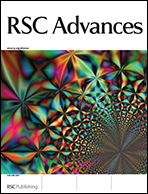Benzoate (4-hydroxybenzoate, 4-mercaptobenzoate and 4-aminobenzoate) functionalized polymer resin (Merrifield resin (MR) or Wang resin (WR)) and mesoporous silica SBA-15 are connected to assemble photofunctional hybrids by bridging lanthanide ions (Gd3+, Eu3+) through coordination bonds. The organically functionalized mesoporous SBA-15 are synthesized by co-condensation of tetraethoxysilane (TEOS) and modified by organic coupling agent 3-methacryloxypropyltrimethoxy-silane (denoted as MPTMS) in the presence of Pluronic P123 surfactant as a template. Europium polyoxometalates (Na9EuW10O36·32H2O, abbreviated as Na9EuW10) are encapsulated into the composite host through an ionic liquid (1-methyl-3-(trimethoxysilylpropyl) imidazolium) as a double linker, which is fixed on the surface of mesoporous SBA-15. The detailed physical characterization of these photofunctional hybrids are characterized by Fourier Transform Infrared (FTIR), X-ray diffraction (XRD), Thermo-gravimetric Analysis (TGA), Transmission Electron Micrographs (TEM), N2 absorption and desorption and luminescent performance. It is worth pointing out that some hybrids possess high luminescent output (quantum yields) and long decay time (reaching the millisecond scale) and cool-white light (from CIE diagrams). The research provides a strategy to assemble multi-component hybrids to realize the cool-white integration.

You have access to this article
 Please wait while we load your content...
Something went wrong. Try again?
Please wait while we load your content...
Something went wrong. Try again?


 Please wait while we load your content...
Please wait while we load your content...